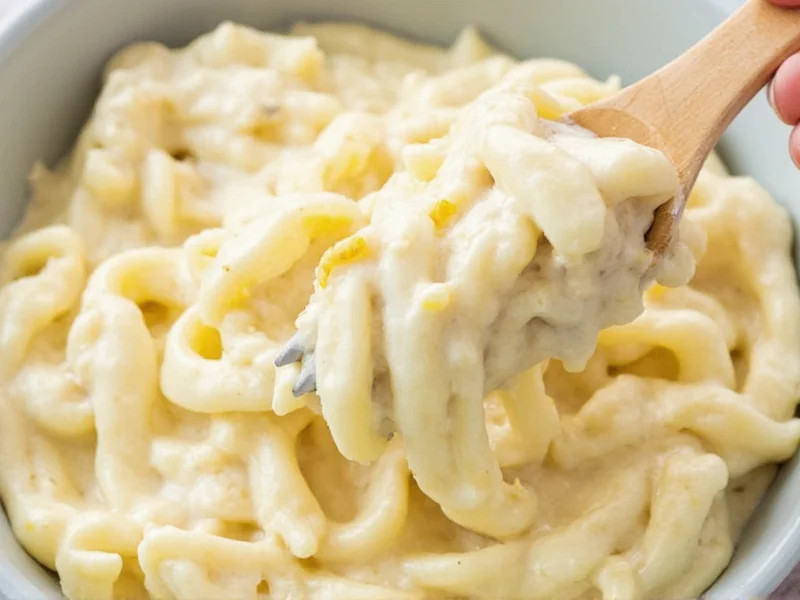The most reliable way to keep alfredo sauce creamy is to maintain proper temperature control (never boiling), use freshly grated Parmesan cheese, gradually incorporate warm cream or pasta water, and continuously stir using a figure-eight motion. Avoid high heat and never add cold ingredients to the sauce, as these are the primary causes of separation and graininess in homemade alfredo.
Alfredo sauce's delicate emulsion can break down for several scientific reasons. The cheese proteins coagulate when exposed to high temperatures, while the fat separates from the liquid components. Understanding these principles is essential for preventing alfredo sauce from separating during preparation and serving. Many home cooks make critical errors that compromise texture, but with proper technique, you can achieve restaurant-quality results every time.
Why Temperature Control Matters for Creamy Alfredo
Heat is alfredo sauce's biggest enemy. When sauce exceeds 160°F (71°C), the cheese proteins tighten and expel fat, causing irreversible separation. Professional chefs maintain a low and slow cooking temperature for alfredo sauce between 140-150°F (60-65°C). Use a heavy-bottomed skillet that distributes heat evenly and prevents hot spots. Never let the sauce reach a simmer—visible steam is your temperature guide. If reheating leftovers, use a double boiler method with gentle indirect heat.
Ingredient Selection: The Foundation of Creamy Texture
The quality and preparation of ingredients directly impact your sauce's texture. Pre-grated cheese contains anti-caking agents that prevent proper melting. For how to make alfredo sauce creamy with store-bought cheese, you'll compromise texture. Always use freshly grated Parmigiano-Reggiano or a Parmesan-Pecorino blend. The cheese should be at room temperature before adding to warm (not hot) cream. For dairy components, use heavy cream with at least 36% fat content—lower fat alternatives lack the necessary emulsifying properties.
| Ingredient | Proper Preparation | Common Mistake |
|---|---|---|
| Cheese | Freshly grated, room temperature | Pre-grated, cold from refrigerator |
| Cream | Gently warmed to 120°F (49°C) | Cold from refrigerator |
| Pasta water | 1/4 cup reserved before draining | Not used or added too late |
| Butter | High-fat European style, room temperature | Low-fat alternative, melted |
Mastering the Emulsion Technique
The sequence and method of combining ingredients determines success. Start by warming cream and butter together over low heat until butter melts completely. Remove from heat before adding cheese—residual warmth is sufficient for melting. Incorporate cheese gradually, one handful at a time, stirring constantly in a figure-eight motion. This technique creates a stable emulsion by evenly distributing fat molecules. For how to keep alfredo sauce creamy after cooking, maintain constant gentle movement. If sauce thickens too much, add reserved pasta water one tablespoon at a time while stirring vigorously.
Troubleshooting Separated Alfredo Sauce
Even experienced cooks encounter separation. If your sauce breaks, immediately remove from heat and add an ice cube while whisking vigorously—the sudden temperature drop helps re-emulsify. Alternatively, blend 1/4 cup of the sauce with 1 teaspoon of cornstarch slurry, then slowly whisk back into the main batch. For how to fix grainy alfredo sauce texture, strain through a fine-mesh sieve while warm, then reheat gently with additional warm cream. Never attempt to fix separated sauce by adding more cheese—it compounds the problem.
Advanced Techniques from Professional Kitchens
High-end restaurants employ several pro secrets for maintaining creamy alfredo sauce. Some chefs add a small amount of sodium citrate (0.25% of cheese weight), which stabilizes the emulsion without altering flavor. Others incorporate a roux base using equal parts butter and flour before adding dairy, creating a more stable foundation. For extended service, many establishments finish the sauce tableside, combining pre-warmed components at the last moment. When plating, always coat pasta first with sauce before adding additional toppings that might cool the dish.
Storage and Reheating Without Compromising Texture
Proper storage prevents texture degradation. Cool sauce rapidly by placing the container in an ice bath while stirring, then transfer to an airtight container with plastic wrap pressed directly against the surface to prevent skin formation. Refrigerate for up to 3 days. For how to reheat alfredo sauce without breaking, use a double boiler method with constant stirring. Microwave reheating requires 15-second intervals with vigorous stirring between each session. Always add a splash of cream or pasta water during reheating to restore optimal consistency.











 浙公网安备
33010002000092号
浙公网安备
33010002000092号 浙B2-20120091-4
浙B2-20120091-4